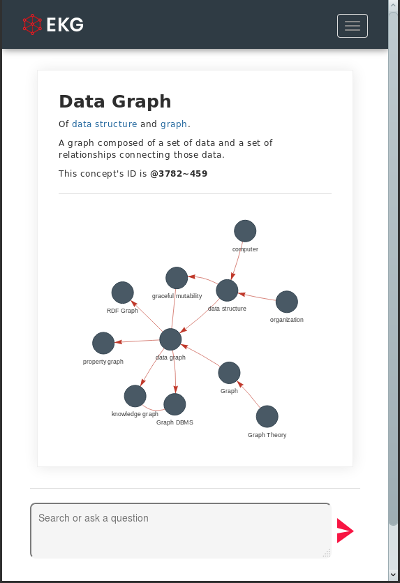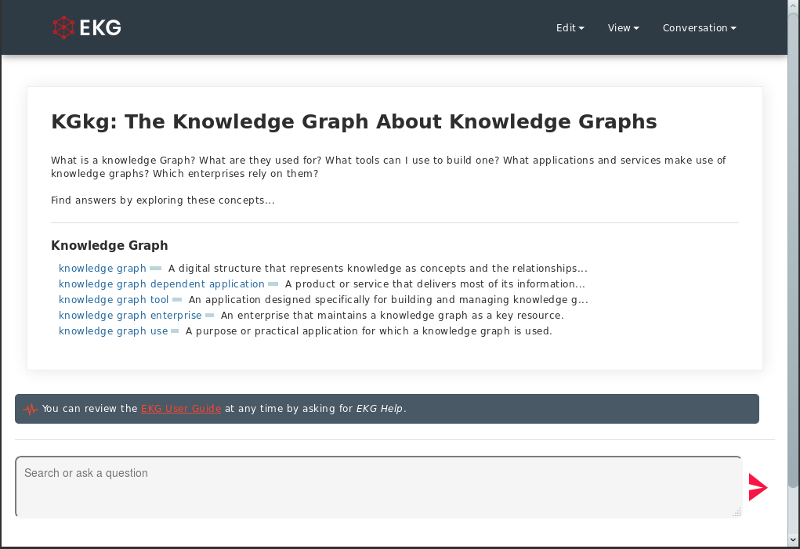At FactNexus, we’ve been helping customers provide semantic access to data for some years now - using our GraphBase DBMS and our semantic frameworks. We’ve spent so much time doing this that we’ve decided to make it a focus.
Our new offering is called EKG. It’s an Enterprise Knowledge Graph repository and suite of tools – offered as Software as a Service (SaaS).

We’re excited about EKG – it has functionality that no-one else can offer. A key part of EKG is its English semantic framework. The framework is an ontology of more than 80,000 common concepts that understands more than a million English words. This framework allows a knowledge graph to be built, maintained and queried using conversational English. Anyone can "chat" with their EKG knowledge graph to capture knowledge or get answers.
In the coming weeks, we’ll provide chatbot, web, Slack, Messenger, WhatsApp, Discord, Telegram and MS Teams gateways that let you put EKG through its paces.
For now though, you can get a taste for the power of EKG by visiting KGkg: The Knowledge Graph about Knowledge Graphs. We figured that there was no better way to demonstrate the usefulness of a knowledge graph than by making one that helps to demystify the topic.


Stephen Young is CEO of FactNexus and a knowledge graph and complex data specialist. His lifelong passion for new knowledge technologies comes from his belief that our biggest problems are too complex to solve without artificial help. Steve re-engineered the famous ELIZA chatbot and built his first neural network as a CompSci and Psychology undergraduate and he published a web-based Knowledge graph, with web search and a conversational UI, a full two years before Google.
- Tags
- knowledge graphs
- More Articles
- A New Strategy for Enterprise AI Safety
- Beyond RAG: Knowledge-Engineered Generation for LLMs
- Generative AI is Graph's Biggest Ever Opportunity
- Is Human Intelligence Just Autocomplete on Steroids?
- KayBot is Now beth.ai
- How to Build a Knowledge Graph
- What IS a Knowledge Graph?
- Why Your Slack Team Needs a Knowledge Base
- What is a SEMANTIC Knowledge Graph?